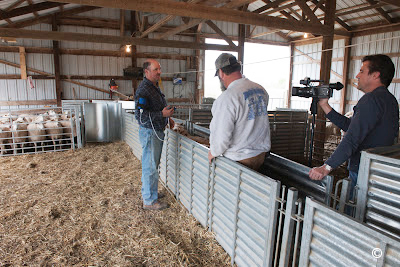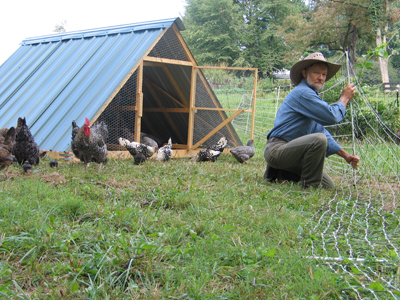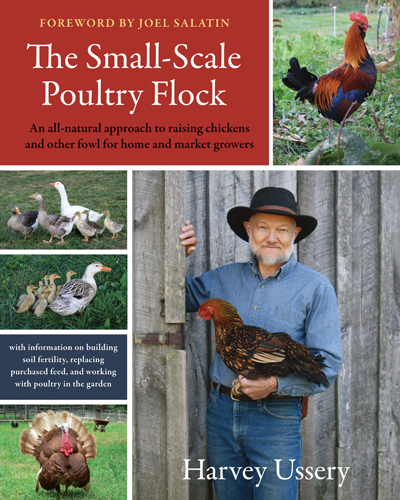|
MESSAGE FROM THE OWNER
Lamb Dining Experiences:The Good and the Bad
My wife and I recently made a 10-day trip to Washington, DC—which meant 10 days dining in restaurants. Whenever the restaurant had lamb on the menu, we ordered it.
On each occasion I asked the waiter or chef about the source of the lamb.
Three times we were served lamb cutlets from New Zealand. Each time the meat was tender and juicy. The flavor varied slightly according to the herbs and spices applied to it. Each "lamb" experience was good enough that I, an American lamb producer, had to ruefully salute our Kiwi competitors for their consistent product. On a scale of 1 to 10, I would give each of these meals a 7 (plus or minus 1).
The other two times (both in Washington, DC), the lamb was from the US.
One was a lamb shank at Urbana Restaurant in Hotel Palomar near the Dupont Circle. It was one of the best lamb meals (or any meal) I've experienced—period. It scored a 10 on my scale. If you like lamb and are in DC, do yourself a favor and visit that restaurant. (It's not cheap!) The flavor was both mild and complex. It was so tender that the nicely browned shank fell open on the plate at the first touch of my fork. I later talked to Urbana's head chef, John Critchley. He cooks his lamb shanks for 18 hours. Where does he obtain his lamb? Direct from a local farm in Virginia. The farm is operated by Craig Rogers. (Go to www.borderspringsfarm.com for details.) He keeps Texels and Katahdins, and from them he supplies select restaurants in DC and elsewhere with his lamb. Major kudos to the restaurant, the chef and the shepherd.
The other meal was at a moderately upscale restaurant in Georgetown. It's part of a small chain of restaurants in the East. I've eaten at these restaurants for years in Georgetown and Columbia, MD. We like their menu (it has a few unusual things—and great cheese) and the age group (20 to 40) that frequents them. The restaurant had a lamb entree—a tenderloin (a less frequent way to cut and present lamb) for less than $20. When it arrived I understood the low cost. It was a large lamb tenderloin. It was also tough to cut and chew. And its flavor was unusually strong for lamb. I ate less than half of it.
Where did it come from? From Pennsylvania, I was told. Perhaps that was the food-service source for the restaurant, but I suspect it was lamb from 1500 miles west that was nearly a year old before it was slaughtered. It was probably offered to the restaurant chain at a "bargain" price—because new crop (less than 6 months of age) US lamb is hard to find in the spring and thus is expensive/lb. To compound the situation it was probably cooked too rapidly for lamb of that age. (It takes more cooking time to tenderize older lamb.) I scored it a 2 (because I've had even worse lamb)—and grimaced mentally because eating experiences like that are the worst form of promotion for US lamb.
My conclusions?
It's not good for the US lamb industry, lamb consumers or restaurants that the same label "lamb" is applied to everything from very young lamb (50 lbs live weight and less than 3 months of age) to older lamb (over 200 lbs at slaughter and 11 to 12 months of age).
Older lamb is not, inherently, bad meat—but it can result in a negative dining experience when it's cooked like younger lamb. We often eat meat from ewes more than 1 year of age in our home but, knowing the age of the animal at slaughter, we prepare it differently. The result is meat that's tender—but the flavor is always stronger than lamb that is less than 8 months old. Some people much prefer it to young lamb. Most do not, particularly those new to lamb as meat.
The British sheep industry recently proposed calling older lamb "hogget," a traditional British word for a yearling sheep, and marketing it as such to reduce confusion. That word would not work in the US, of course, but the US lamb industry would do itself a favor if we attached a different label to older lamb.
Best wishes to you all,
Stan Potratz, Owner
FIRST NOTICE
National Sheep Research Weekend
The NCERA 214 Sheep Research Committee will hold a Sheep Research Weekend at the Clay Center Regional Events Center in Spencer, IA on July 27th & 28th, 2012. The registration website will be online by the middle of May. Registration is $50 per person (includes leg of lamb dinner).
Draft schedule of events:Friday July 27th
- 12:30 Registration
- 1:30 Long term Economic Outlook for the United States Sheep Industry and the Impact of Ewe Productivity on Profit,
Erica Rosa-Sanko, Agricultural Economist, Livestock Marketing Information Center, Denver
- 2:15 Use of Breed Resources to generate more lambs in commercial operations. Dr. Kreg Leymaster, USDA Meat Animal
Research Center, Clay Center
- 3:00 Break
- 3:30 Accelerated lambing systems to generate more lambs. Dr. Richard Ehrhardt, Sheep Extension Specialists, Michigan
State University, East Lansing
- 4:15 Successful use of CIDRs to increase out of season breeding and controlling embryo losses. Dr. Keith Inskeep,
West Virginia University, Morgantown
- 5:00 Critical nutrient inputs to increase lambs born and their survival. Dr. Dan Morrical, Iowa State
University, Ames
- 5:45 Social and Cocktail Hour
- 6:30 Leg of Lamb Dinner (part of the registration fee)
- 7:30 Keynote Address, Genomics and Marker Assisted Selection tools for breeding better sheep. Dr. Dave
Notter, Virginia Tech University, Blacksburg, VA
- 8:30 New concepts in OPP selection and eradication. Dr. Kreg Leymaster
- 9:00 Adjourn for the evening.
Saturday July 28th
- 8:00 Strategies to minimize resistant internal parasites on your farm. Dr. James Miller,
School of Veterinary Medicine, Louisiana State University, Baton Rouge
- 9:30 Break
- 10:00 Creative ways to raise more sheep with the same resources.
Mike Caskey "Lead Instructor" to Pipestone Lamb And Wool Program, Pipestone, MN
- 10:45 Q & A
- 11:15 Adjourn to Center of Nation NSIP Sale, Swine Barn
COMING SOON
More How-to Videos

We've been busy filming and editing how-to videos. Topics covered include setting up a Premier 4000s Shearing Machine to processing lambs.
Currently on our website we have the following how-to videos under Site Utilities
- How to Install Premier Netting
- How to properly place clipper blades to your 4000c clipper.
Expect to see more videos here and on the YouTube Channel in the coming months.
PREMIER TIP
Room to Roam

Our poultry customers often ask, "How many square feet of space do I need for my chickens?"
The answer depends on several factors including size of birds and whether they are free-range
or confined or a bit of both. Our chickens (about 50) enjoy being outside during the pleasant days of spring,
summer and fall, but when the weather is chilly, windy or wet, they tend to stay inside by choice. On those days
they need additional space inside even though we consider them to be free-range.
Following are standard guidelines for space. It's fine to add more space for
your birds if you have it available.
For each free-range bird:
Heavy breeds-4 sq ft. If birds are to be butchered before 16 weeks of age, 2 sq feet will work.
Light breeds-3 sq ft.
Bantams-2 sq ft.
For each bird in confined housing:
Heavy breeds-10 sq ft.
Light breeds-7.5 sq ft.
Bantams-5 sq ft.
Other interesting bird facts:
Incubation time:
Chickens-21 days.
Ducks-28 days.
Geese-28 to 32 days
Pheasants-24 to 28 days
Turkeys-28 days
Life expectancy is:
Chickens-5 to 9 years.
Ducks-6 to 8 years.
Geese-10 to 20 yearss
Quail-1 to 2 years.
VIP ARTICLE
Liberate Your Flock!
by Harvey Ussery

The all too common version of "letting the chickens outdoors" is the static chicken run. Starting as a grassy sward, within a couple of weeks it is bare of every last blade of green, looking like the surface of the moon dotted with chicken poops. The chickens are bored; the soil becomes toxic with manure; the droppings are breeding grounds for flies and vectors for disease and parasites, and run off as water pollution in the next rain.
If this sketch describes your flock's out-of-doors "playground," be assured that none of us "flocksters"-not one-has to be satisfied with this dreary model. Maybe it's time for the Great Liberation.
Some flocksters are able to free-range their flocks entirely during the day, a strategy that may work for you as well assuming you shut them securely inside the coop at night, when most wild predators are active. Other flocksters find that predation pressures even during the day-and remember that your neighbor's dog can be the most serious daytime predator of all-make complete day ranging a losing proposition. In such cases, giving the flock plenty of space to roam on pasture inside electric net fencing allows them the most natural lifestyle possible while protecting from predators.
Electronet does not protect from aerial predators, of course. I find that keeping the flock enclosed for the night until I get out to feed in the morning prevents most aerial hits, both from owls (active at night) and hawks (who often attack in the first hour of daylight). Guardian dogs are extremely effective at deterring predators both in the air and on the ground.
Pasturing the flock gives them access to their three basic "food groups": live plants such as clovers and grasses; wild seeds and fruits such as berries; and animal foods such as earthworms, slugs and snails, and insects. These self-foraged live foods are superior to anything you can offer your flock from a bag-and save on feed bills.
Our chickens can become an important part of pasture management: As we rotate them over the pasture-to prevent damage to the sod from their scratching and to prevent build-up of parasites or pathogens-they help control weeds by eating seeds, reduce the need for mowing by grazing, and help keep insect populations in balance-all while fertilizing the sward with their droppings.
"Micro-flocks" of just a few birds can be rotated over pasture in predator-proof mobile shelters, part covered for shade and protection from rain, part open to sunlight. And if you don't have pasture for your birds, you might "pasture" them on your lawn instead.
A protective barrier that keeps predators outside can also keep the chickens inside doing useful work for you. I often use tiller chickens to till in cover crops or to kill established pasture sod in preparation for new garden ground, confining them to their work either inside an electronet or, in the garden, inside a small mobile shelter or "chicken tractor."
And by the way, if you simply do not have any pasture to give your birds, even a lawn, do not despair. Cover that bare run with as thick a layer of organic debris as you can, turning it in effect into a giant compost heap. It will absorb the droppings, preventing runoff pollution; will keep the flock endlessly entertained as they scratch through it; will generate high-quality natural foods (crickets, pill bugs, grubs, even Vitamins K and B12 as microbial byproducts)-and in the end will be converted by your shredder-composter chickens into high-grade compost for the garden.

~Harvey Ussery is the author of The Small-Scale Poultry Flock (Chelsea Green, 2011-available in the Premier bookstore), which offers an integrated poultry husbandry based on imitation of nature for production of safer, more wholesome poultry at any scale. He maintains an informative website, www.themodernhomestead.us, featuring numerous articles on poultry and other home food production and sustainability issues.
EMPLOYEE SPOTLIGHT
Gina Bennett
As receptionist, Gina spends her day as the cheerful voice folks first hear when they call Premier. Talking to people from all across the country is her favorite part of the job. For Gina, the best part of Premier is that it's a business in rural Iowa making a mark on the livestock and poultry industries.
When she's not at Premier, Gina is spending time with her husband and (grown) children Andrea and Christopher. She enjoys doting on her two grandchildren, Owen and Jake.
Family activities include golfing, camping, boating and going to the Iowa State Fair and Branson, MO. Gina is highly active in the community theater. Recent productions included "A Bad Year for Tomatoes" and "Nunsense." She is also the Speech coach for the Keota High School.
Gina's favorite statement is one she found on the inside of her father's Possibility Thinkers bible, where he inscribed, "Never throw away tomorrow." To Gina, that statement says it all.
|